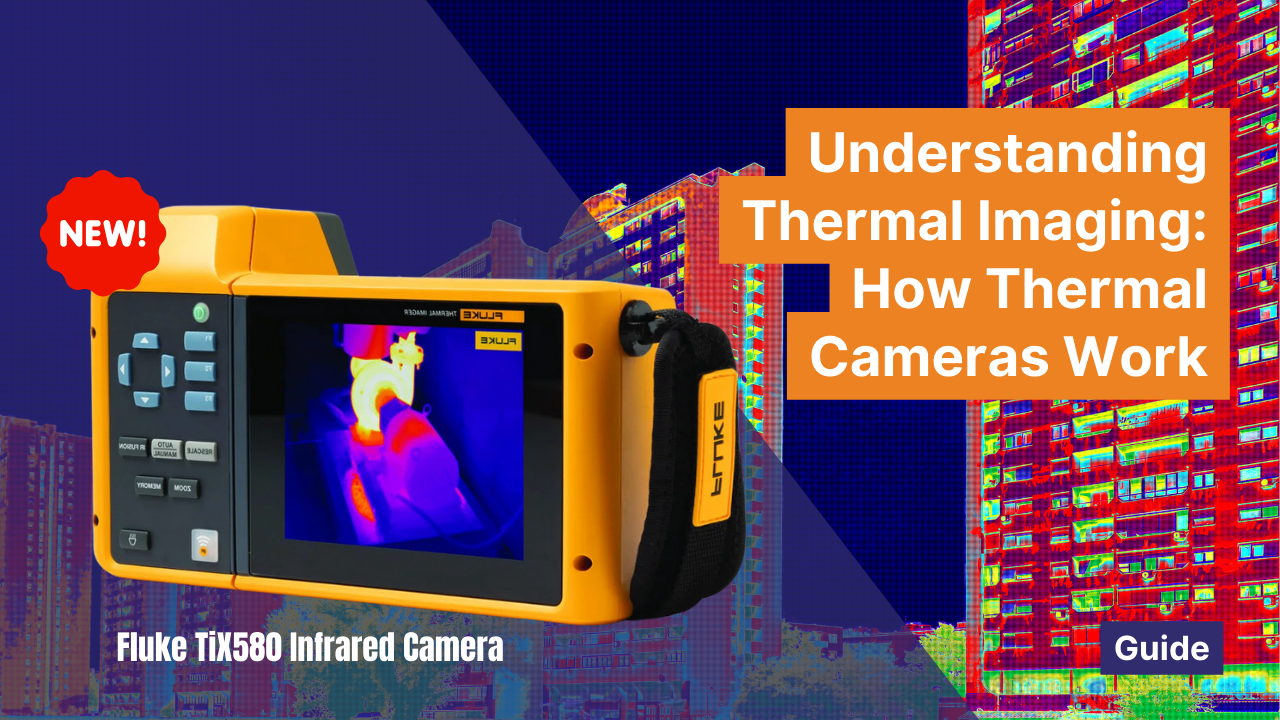
Understanding Thermal Imaging: How Thermal Cameras Work
Thermal imaging is a sophisticated and non-invasive technique that utilises infrared technology to detect heat emissions from various objects. This process converts the infrared energy, which is invisible to the human eye, into a visible light display. The infrared (IR) energy, or thermal energy, is emitted by all objects above absolute zero temperature, and the variations in these emissions form the basis of thermal imaging.
Basics of Thermal Imaging
Thermal imaging is a powerful, versatile, and proactive technology that has found indispensable applications in various industries. Providing a clear picture of thermal anomalies helps in the early detection of potential problems, maximising operational efficiency, safety, and cost savings. In industrial settings, thermal imaging is crucial to preventive maintenance strategies. Thermal imaging can significantly enhance operational efficiency and safety by enabling the detection of abnormal heat patterns, such as those caused by overloads or impending equipment failures.
What is a Thermal Image?
A thermal image, or thermogram, is the visual output of thermal imaging processes. Thermal images are captured using a specialised device, often called a thermal camera or infrared camera. A thermal image is distinctly different from a traditional photograph. While a conventional photograph captures visible light reflected from objects, a thermal image represents varying levels of infrared radiation emitted by the objects.
The interpretation of a thermal image is facilitated by a colour palette, where each colour represents a specific range of temperatures. For instance, shades of blue often indicate cooler temperatures, while shades of red signify hotter areas. Thus, a thermal image provides a detailed temperature map of the surveyed area, highlighting hotspots and potential anomalies that may need further investigation.
What Does a Thermal Imaging Device Detect?
A thermal imaging device, such as a thermal imager or infrared imager, detects the infrared radiation or heat emitted by objects. Based on these detections, it creates a 'thermal profile' or heat map of the area in focus.
Applications of Thermal Imagers
Thermal imagers can detect electrical and mechanical systems' overheating and circuit overload issues. In building maintenance, they can identify heat loss due to poor insulation, air leaks in HVAC systems, and water leaks within structures. These capabilities make thermal imagers invaluable for improving energy efficiency and preventing damage.
In security applications, thermal cameras can detect the presence of intruders in low light or adverse weather conditions by picking up their heat signatures. They also play a crucial role in search and rescue operations, forest fire management, and even medical and veterinary fields to detect health issues.
How Does Thermal Imaging Work?
Thermal imaging operates on a simple yet effective principle: all objects emit infrared energy as a function of their temperature. This form of energy, invisible to the human eye, can be detected and translated into a visual image by a thermal imaging system. Here's a step-by-step look at the process:
1. The thermal camera, equipped with an infrared detector, captures the infrared radiation emitted from all objects in its field of view.
2. The camera's built-in software then processes the captured radiation data. An optical system focuses infrared energy onto a sensor array, or detector chip, with thousands of pixels in a grid.
3. The software translates the data into an image, known as a thermal image or thermogram, representing the temperature variations of the scene.
4. Each temperature value is assigned a different colour. Typically, warmer areas are represented in red, and cooler areas are shown in blue. A matrix of colours corresponding to temperatures is sent to the camera display as a picture. 5. Leading thermal and infrared cameras from manufacturers like Fluke allow you to then edit, transfer, store, and analyse your thermal images.
Types of Thermal Imagers
Thermal imagers fall into two main categories: cooled and uncooled.
Cooled Thermal Imagers
Cooled thermal imagers are high-performance devices that operate within a vacuum-sealed case and are cryogenically cooled. This cooling enhances their sensitivity, allowing them to detect temperature differences as tiny as 0.02°C. While these images offer superior performance, they are expensive and typically reserved for specialised applications like scientific research and military operations.
Uncooled Thermal Imagers
Uncooled thermal imagers, on the other hand, operate at ambient temperature and are significantly more affordable than their cooled counterparts. They are engineered to detect temperature differences as small as 0.2°C and are robust enough for everyday use. From routine industrial inspections to security surveillance, uncooled thermal imagers are the go-to choice for various applications.
Conclusion
Thermal imaging technology has revolutionised detecting and analysing heat patterns across various fields. From industrial maintenance and building inspections to security and medical applications, thermal cameras' versatility continues to expand. Understanding how these devices work, their applications, and how to select the right thermal imaging camera can help you leverage this technology to its fullest potential.


